Wind Energy - The Powerhouse of Green Energy Solutions
In today's world, where the impacts of climate change are becoming increasingly evident, the search for sustainable energy solutions has never been more critical. Among these solutions, wind energy stands out as a beacon of hope. This natural resource harnesses the power of the wind, converting it into clean, renewable electricity that can significantly reduce our reliance on fossil fuels. But what exactly makes wind energy such a vital player in the renewable energy landscape? Let's dive into the significance of wind energy and explore its benefits, challenges, and the innovations that are shaping our future.
Wind energy is not just a trend; it is a transformative force in the energy sector. With the ability to generate electricity without emitting greenhouse gases, wind energy is a cornerstone of global efforts to combat climate change. The technology behind wind turbines has advanced remarkably over the years, allowing for more efficient energy production. Imagine a giant fan spinning in the breeze, capturing the kinetic energy of the wind and turning it into electricity that powers our homes, schools, and businesses. This is the essence of wind energy — a clean, sustainable source of power that is becoming increasingly essential in our fight for a greener planet.
As we look to the future, the role of wind energy is poised to grow even more significant. With global investments in renewable energy on the rise, wind power is set to become a leading contributor to the energy mix. Countries around the world are investing heavily in wind farms, both onshore and offshore, to harness this abundant resource. The potential for wind energy is vast, with estimates suggesting that it could supply up to 20% of the world's electricity needs by 2030. This potential is not just a number; it represents an opportunity to create jobs, stimulate economic growth, and make a meaningful impact on our environment.
However, while the promise of wind energy is exciting, it does not come without challenges. Issues such as intermittency, infrastructure requirements, and public acceptance need to be addressed to fully realize wind energy's potential. Yet, through innovation and collaboration, solutions are being developed to tackle these challenges head-on. The future of wind energy is not just about harnessing the wind; it's about creating a sustainable energy ecosystem that benefits everyone.
In conclusion, wind energy is indeed a powerhouse of green energy solutions. Its ability to provide clean, renewable electricity while stimulating economic growth makes it a vital component of our sustainable energy strategies. As we continue to innovate and invest in this promising energy source, we move closer to a cleaner, more sustainable future for generations to come. So, are you ready to embrace the wind and join the movement towards a greener planet?
- What is wind energy? Wind energy is the process of using wind to generate electricity through wind turbines.
- What are the environmental benefits of wind energy? Wind energy reduces greenhouse gas emissions and helps combat climate change.
- Are there any challenges associated with wind energy? Yes, challenges include intermittency, infrastructure needs, and public acceptance.
- How does wind energy contribute to economic growth? Wind energy creates jobs, stimulates local investments, and can lead to lower energy costs.
- What is the future of wind energy? The future is promising with ongoing innovations and increasing global investment in wind energy technologies.
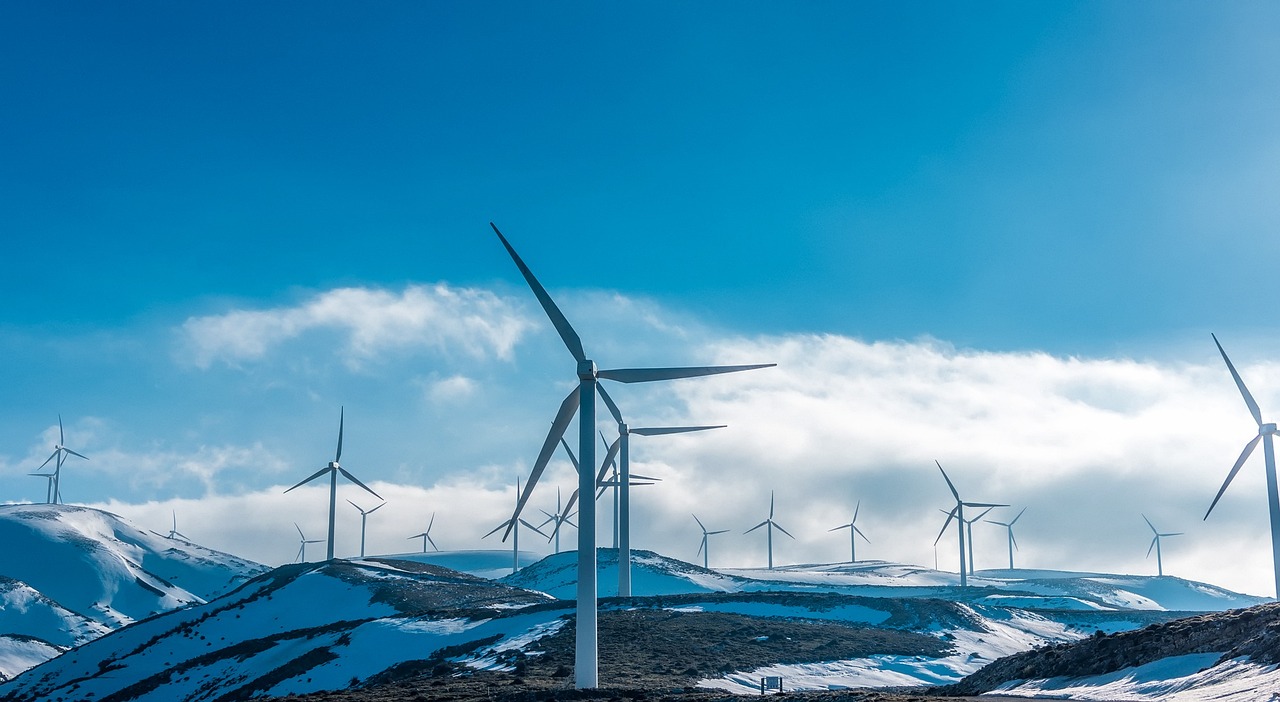
Understanding Wind Energy
Wind energy is one of the most promising sources of renewable energy available today. At its core, wind energy harnesses the natural movement of air in our atmosphere to generate electricity. This process begins with the wind blowing across the blades of a wind turbine, which are designed to capture the kinetic energy of the wind. As the blades turn, they spin a rotor connected to a generator, converting this kinetic energy into electrical energy. It's a bit like catching the wind in your sails and using it to propel you forward, only in this case, it powers our homes and industries.
To understand how wind energy works, let’s break it down into a few key components:
- Wind Turbines: These are the towering structures you see dotting the landscape. They come in various sizes, from small residential turbines to massive offshore installations.
- Kinetic Energy: This is the energy that the wind carries, which is converted into mechanical energy by the turbine blades.
- Electricity Generation: The mechanical energy from the turbine rotor spins the generator, producing electrical energy that can be fed into the grid.
Wind energy is not just about the mechanics; it's also about location. The effectiveness of wind energy generation is highly dependent on the wind patterns of a particular area. For instance, coastal regions and open plains often experience stronger and more consistent winds, making them ideal sites for wind farms. On the other hand, urban areas may not be as suitable due to turbulence caused by buildings and other structures.
As we delve deeper into the significance of wind energy, it’s essential to recognize its potential to contribute to a sustainable energy future. Unlike fossil fuels, wind energy is a clean source of power that produces no greenhouse gas emissions during operation. This characteristic positions it as a vital player in combating climate change and reducing our carbon footprint. Moreover, as technology advances, we are witnessing improvements in turbine efficiency and energy storage solutions, which are crucial for maximizing the benefits of wind energy.
In summary, understanding wind energy is about appreciating both the technology and the environmental implications. It's a powerful reminder of how we can harness natural forces to create a cleaner, more sustainable world. As we explore further, we will uncover the multitude of benefits that wind energy brings to the table and the challenges that lie ahead in its widespread adoption.
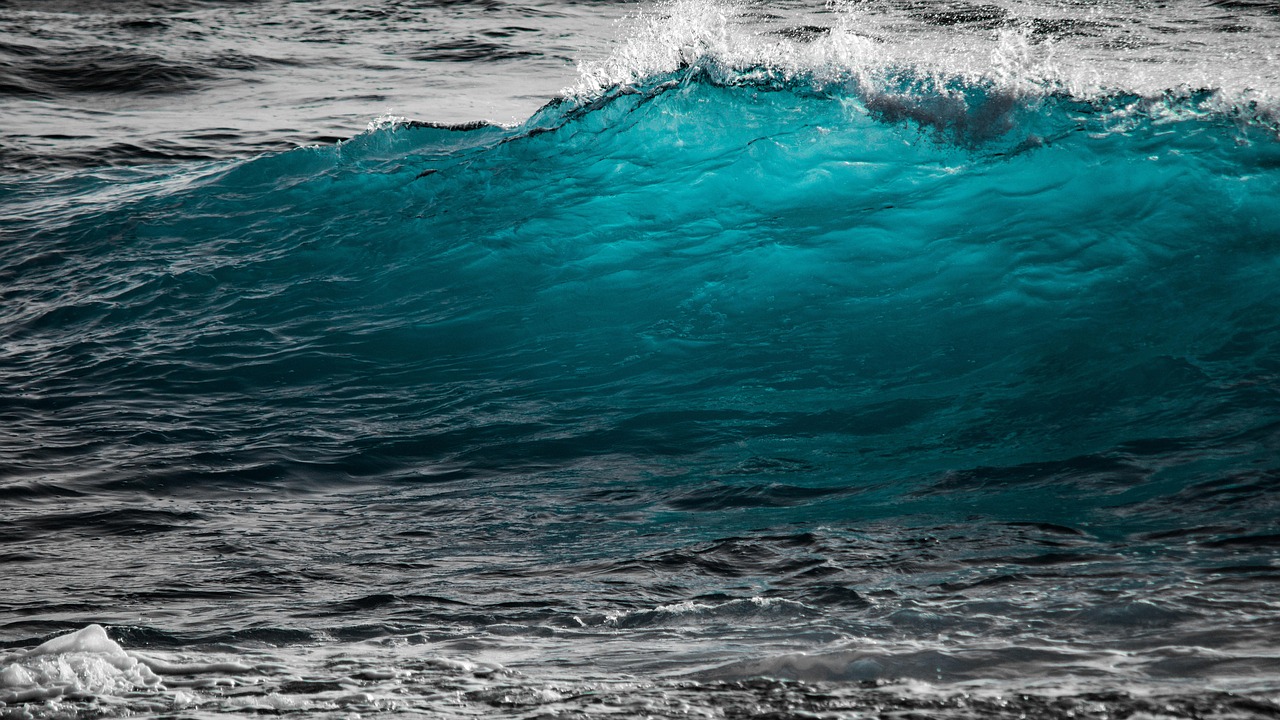
Benefits of Wind Energy
Wind energy is rapidly becoming one of the most significant players in the renewable energy sector, and for good reason! The advantages it brings to the table are not just impressive; they’re downright essential for a sustainable future. When we think about energy sources, we often focus on their environmental impact, economic viability, and social implications. Wind energy checks all these boxes and more, making it a powerhouse in the green energy revolution.
First and foremost, let's talk about the environmental benefits. Wind energy is one of the cleanest forms of power generation available. Unlike fossil fuels, which release harmful greenhouse gases and contribute to air pollution, wind energy operates on a completely different level. By harnessing the natural power of the wind, we can significantly reduce our carbon footprint. According to studies, wind energy has the potential to cut carbon emissions by up to 40% compared to traditional energy sources. This is a game changer in our fight against climate change!
But the benefits of wind energy don’t stop there. Economically, investing in wind energy can lead to substantial job creation. As the wind energy sector grows, so does the demand for skilled workers in areas such as manufacturing, installation, and maintenance of wind turbines. The American Wind Energy Association reports that the wind industry has created over 100,000 jobs in the U.S. alone. This growth not only helps local economies but also contributes to energy independence, reducing reliance on imported fuels.
Moreover, wind energy can lead to lower energy costs for consumers. Once the infrastructure is in place, the cost of generating wind energy is remarkably low. In fact, the price of wind power has dropped by more than 70% in the past decade, making it one of the cheapest sources of electricity available today. This trend is expected to continue as technology advances and more efficient turbines are developed. As a result, consumers can enjoy lower energy bills while supporting a cleaner environment.
Socially, wind energy fosters community engagement and development. Many wind farms are developed in rural areas, providing local communities with a new source of revenue. Landowners can lease their land for wind turbines, creating an additional income stream. Furthermore, wind energy projects often lead to improvements in local infrastructure, such as roads and utilities, benefiting residents beyond just energy production.
However, it’s crucial to acknowledge that the transition to wind energy isn't without its challenges. For instance, while wind energy is a clean source of power, it requires significant land for wind farms, which can lead to land use conflicts. Balancing the need for clean energy with land preservation and aesthetics is an ongoing conversation among stakeholders. But with effective planning and community involvement, these conflicts can often be mitigated.
In summary, the benefits of wind energy are vast and varied. From reducing greenhouse gas emissions and creating jobs to lowering energy costs and fostering community development, wind energy stands out as a vital component of our sustainable energy future. As we continue to innovate and invest in this clean energy source, we pave the way for a greener, more sustainable planet for generations to come.
- What are the main environmental benefits of wind energy? Wind energy significantly reduces greenhouse gas emissions and air pollution, making it a cleaner alternative to fossil fuels.
- How does wind energy contribute to job creation? The growth of the wind energy sector creates jobs in manufacturing, installation, and maintenance, boosting local economies.
- Is wind energy cost-effective? Yes, the cost of wind energy has decreased dramatically over the past decade, making it one of the cheapest sources of electricity available.
- What challenges does wind energy face? Challenges include land use conflicts, infrastructure needs, and public acceptance, which must be addressed for widespread adoption.
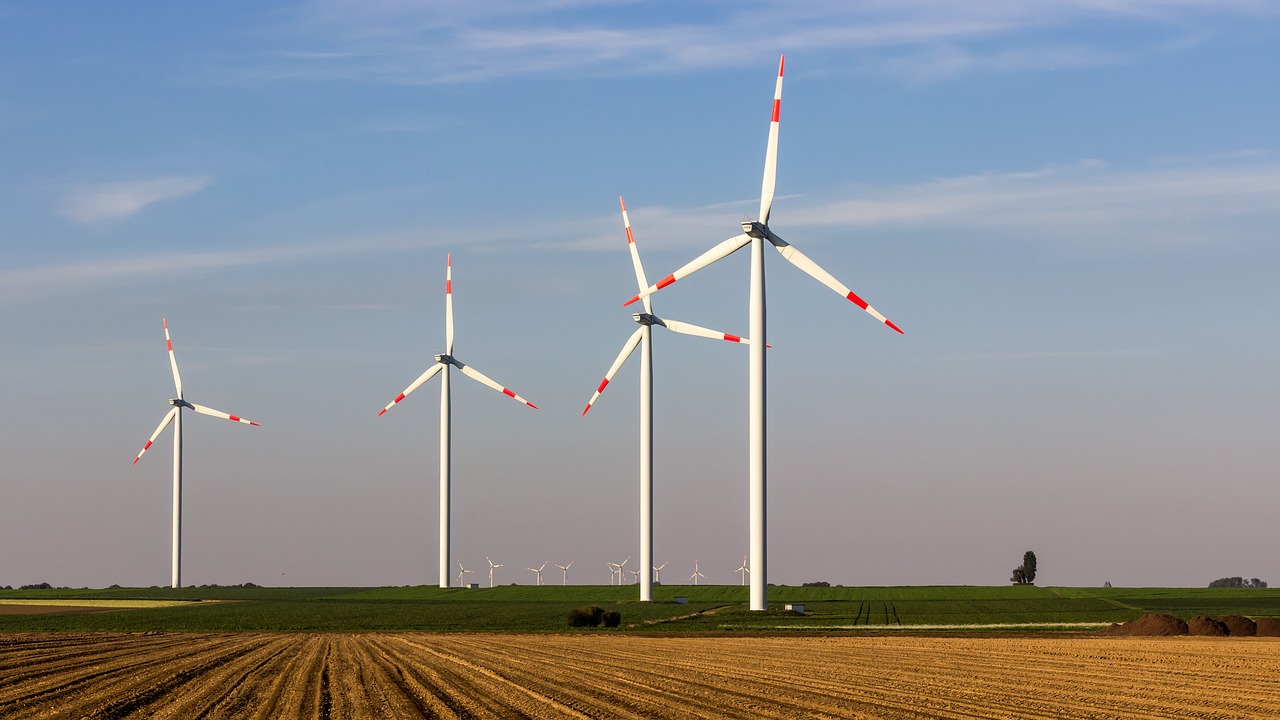
Environmental Impact
Wind energy stands out as a beacon of hope in our quest for sustainable energy solutions. One of the most significant environmental benefits of wind energy is its ability to drastically reduce greenhouse gas emissions. Unlike traditional fossil fuels, which release carbon dioxide and other harmful pollutants into the atmosphere, wind turbines generate electricity without emitting any of these dangerous gases. This characteristic makes wind energy a crucial player in the global effort to combat climate change.
Imagine a world where the air is cleaner, and the planet is healthier. Wind energy contributes to this vision by providing a renewable source of power that can help us transition away from carbon-intensive energy sources. According to recent studies, the use of wind energy has the potential to reduce carbon emissions by up to 1.8 billion tons annually, which is equivalent to taking over 300 million cars off the road. These figures illustrate the profound impact that wind energy can have on our environment.
However, it's important to recognize that while wind energy is significantly cleaner than fossil fuels, it is not without its challenges. The construction of wind farms can impact local ecosystems, particularly concerning wildlife. For instance, the presence of wind turbines can pose risks to birds and bats, which may collide with the turbine blades. To mitigate these risks, developers are increasingly employing advanced technologies and strategies such as:
- Site selection that avoids critical habitats.
- Using radar systems to detect and monitor bird activity.
- Implementing turbine designs that reduce collision risk.
These measures are vital in ensuring that the expansion of wind energy does not come at the expense of our precious wildlife. By prioritizing ecological considerations during the planning and operation of wind farms, we can strike a balance between harnessing renewable energy and protecting biodiversity.
Another aspect to consider is the land use associated with wind energy. Wind farms require significant space, which can lead to conflicts with agricultural land or natural habitats. However, many studies have shown that wind farms can coexist with agricultural activities, allowing for dual land use. Farmers can continue to cultivate crops or raise livestock while benefiting from the additional income generated by leasing land for wind turbines.
In conclusion, while wind energy presents some environmental challenges, its overall impact is overwhelmingly positive. By embracing this renewable resource, we can significantly reduce our carbon footprint, combat climate change, and promote a healthier planet for future generations. The key lies in continuing to innovate and implement solutions that protect our environment while harnessing the power of the wind.
Q1: How does wind energy reduce greenhouse gas emissions?
A1: Wind energy generates electricity without burning fossil fuels, which means it does not emit carbon dioxide or other greenhouse gases that contribute to climate change.
Q2: What are the main environmental concerns associated with wind energy?
A2: The primary concerns include the potential impact on wildlife, particularly birds and bats, as well as land use conflicts. However, many strategies are being implemented to minimize these effects.
Q3: Can wind farms coexist with agriculture?
A3: Yes, wind farms can coexist with agricultural activities. Farmers can continue to use the land for crops or livestock while also earning income from wind energy leases.
Q4: How much can wind energy reduce carbon emissions?
A4: Wind energy has the potential to reduce carbon emissions by up to 1.8 billion tons annually, which is comparable to removing over 300 million cars from the road.
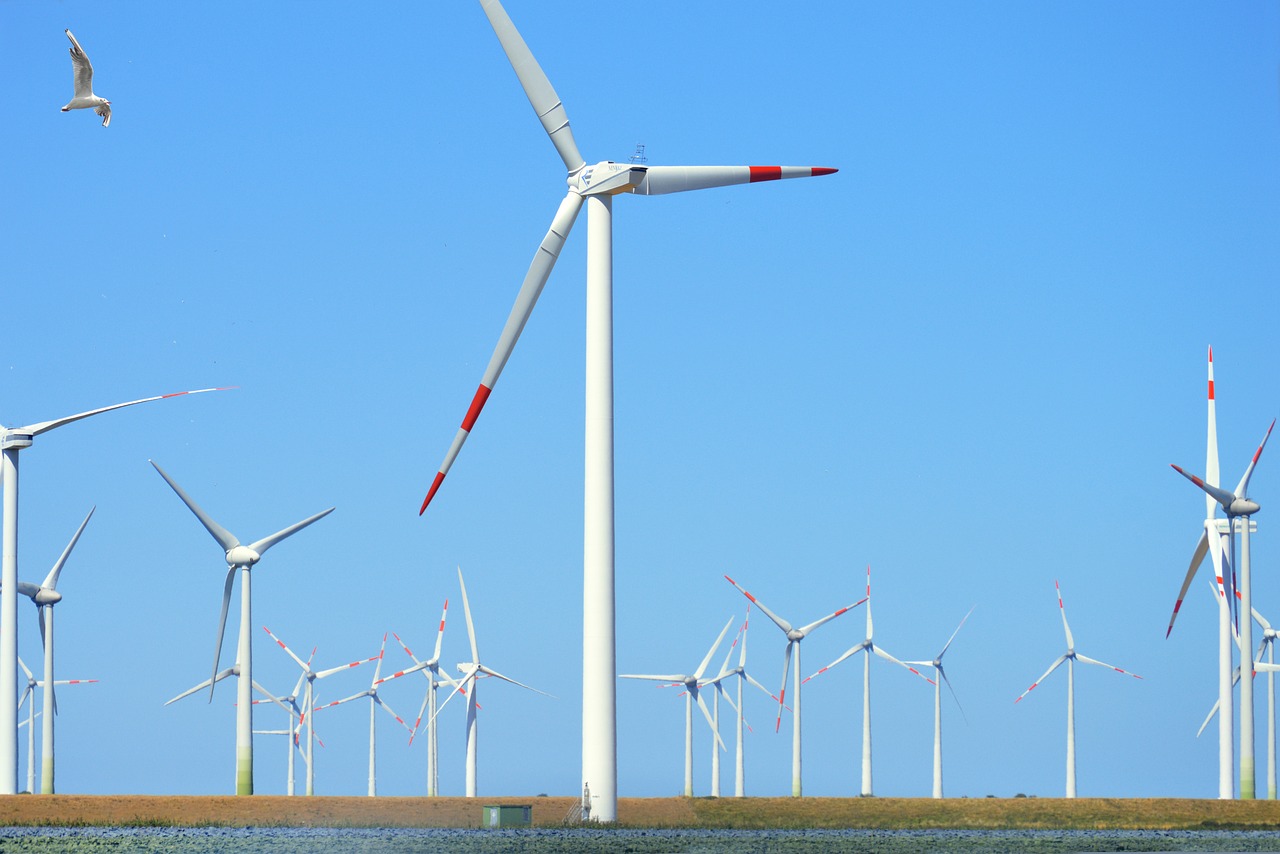
Wildlife Considerations
While wind energy is often touted as a clean and sustainable source of power, it’s important to acknowledge that it can have implications for local wildlife. The construction and operation of wind farms can potentially disrupt habitats, affect migratory patterns, and pose risks to birds and bats. This raises a crucial question: how can we balance the need for renewable energy with the protection of our precious wildlife?
One of the primary concerns is the impact of wind turbines on avian populations. Studies have shown that birds can collide with turbine blades, leading to fatalities. However, it's essential to remember that the overall impact is significantly lower compared to the threats posed by fossil fuel energy sources, such as habitat destruction and climate change. To mitigate these risks, developers and environmentalists are increasingly focusing on strategic siting of wind farms, ensuring they are located away from critical habitats and migratory routes.
Moreover, technological innovations are playing a pivotal role in addressing these challenges. For instance, there are now smart turbine designs equipped with sensors that can detect the presence of birds and bats. These systems can temporarily shut down turbines when wildlife is detected nearby, significantly reducing the risk of collisions. Additionally, research is ongoing to develop sound and visual deterrents that can help keep wildlife at a safe distance from turbines.
Another aspect to consider is the impact of wind farms on local ecosystems. The construction process can disrupt soil and vegetation, which can lead to changes in local biodiversity. However, many wind farm projects now incorporate environmental management plans that aim to restore habitats post-construction and promote biodiversity. This can include planting native vegetation and creating buffer zones that protect sensitive areas.
In conclusion, while the integration of wind energy into our energy mix presents challenges for wildlife, ongoing innovations and careful planning can help mitigate these impacts. The key is to foster a collaborative approach between energy developers, environmental organizations, and local communities to ensure that we harness the power of wind responsibly. By doing so, we can work towards a future where clean energy and wildlife coexist harmoniously.
- What are the main threats to wildlife from wind energy? Wind turbines can pose collision risks to birds and bats, and the construction of wind farms can disrupt local habitats.
- How can wind farms be designed to protect wildlife? Strategic siting, smart turbine technology, and environmental management plans are key strategies to minimize wildlife impacts.
- Are there any benefits of wind energy for wildlife? By combating climate change, wind energy can help protect ecosystems and species affected by fossil fuel pollution.
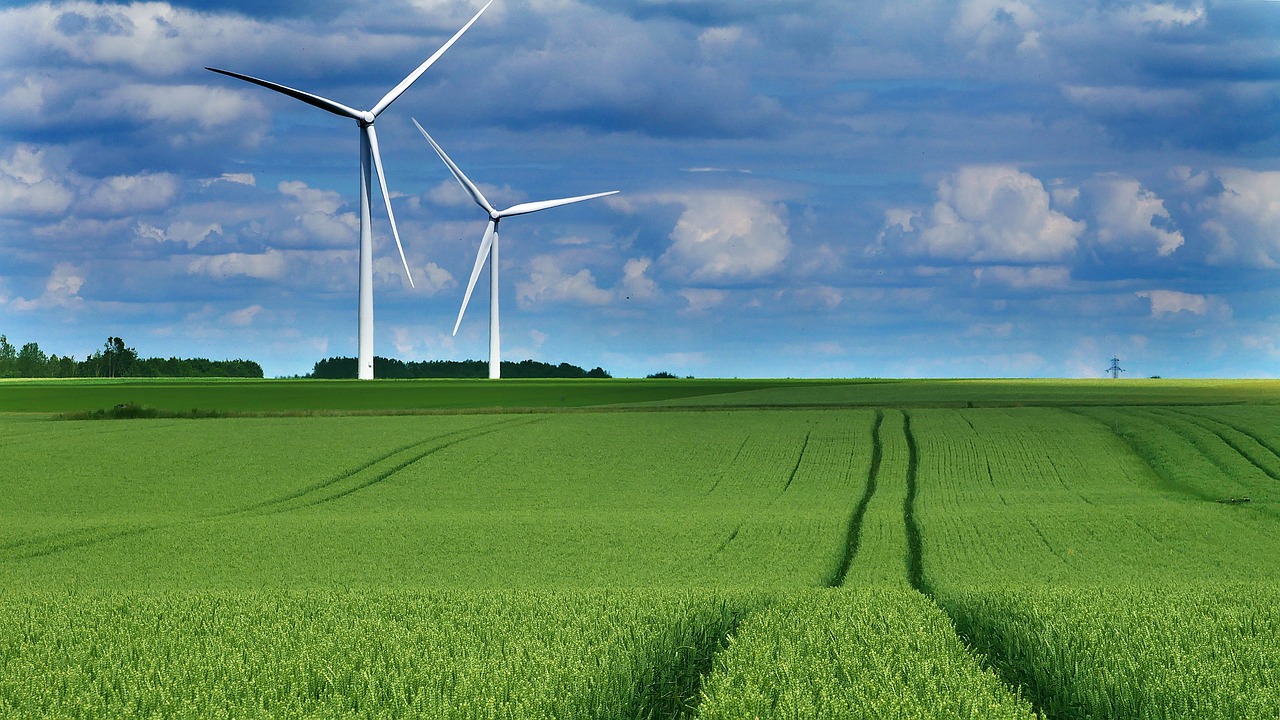
Land Use and Aesthetics
When it comes to harnessing the power of wind, one of the most pressing concerns revolves around land use and aesthetics. Wind farms, while a beacon of renewable energy, require significant tracts of land to install their towering turbines. This necessity can lead to conflicts with agriculture, wildlife habitats, and residential areas. Imagine a vast landscape dotted with spinning turbines; for some, it’s a symbol of progress, while for others, it may mar the natural beauty of the environment.
As we dive deeper, it’s essential to consider the balance needed between land use for wind energy and the preservation of our natural surroundings. Wind farms can occupy large areas, and the installation of these structures can disrupt local ecosystems. However, innovative approaches are being adopted to mitigate these impacts. For instance, many wind farms are now being integrated into agricultural lands, allowing farmers to continue their practices while simultaneously generating clean energy. This dual-use model not only maximizes land efficiency but also provides farmers with an additional revenue stream.
Moreover, aesthetics play a crucial role in public acceptance of wind energy projects. The visual impact of wind turbines can be a contentious issue. Some communities embrace the sight of these modern structures as a testament to sustainable progress, while others see them as an eyesore. To address these concerns, developers are increasingly engaging with local communities during the planning stages, ensuring that the placement of turbines considers both environmental and aesthetic factors.
To further illustrate the balance between land use and aesthetics, consider the following table that outlines various strategies being implemented to enhance the integration of wind farms into their environments:
| Strategy | Description |
|---|---|
| Community Engagement | Involving local residents in the planning process to address aesthetic concerns and land use conflicts. |
| Dual-Use Agriculture | Implementing wind farms on agricultural land to allow for continued farming alongside energy production. |
| Visual Impact Assessments | Conducting studies to evaluate and minimize the visual impact of wind turbines on local landscapes. |
| Strategic Siting | Choosing locations for wind farms that minimize disruption to wildlife and preserve scenic views. |
Ultimately, the challenge of land use and aesthetics in wind energy development is not insurmountable. With thoughtful planning and community involvement, it is possible to create wind farms that not only generate clean energy but also harmonize with the surrounding environment. As we move forward in the quest for sustainability, finding this balance will be key to the successful integration of wind energy into our landscapes.
- What are the main concerns regarding land use for wind farms? The primary concerns include the potential disruption to agriculture, wildlife habitats, and local communities.
- How can wind farms coexist with agriculture? Many wind farms are now designed to allow for dual-use of land, enabling farmers to continue their operations while generating energy.
- What measures are taken to address aesthetic concerns? Community engagement and visual impact assessments are commonly used to ensure that wind farms are visually acceptable to local residents.
- Are there any regulations governing land use for wind energy? Yes, regulations vary by region, but they often include guidelines for land use planning and environmental impact assessments.
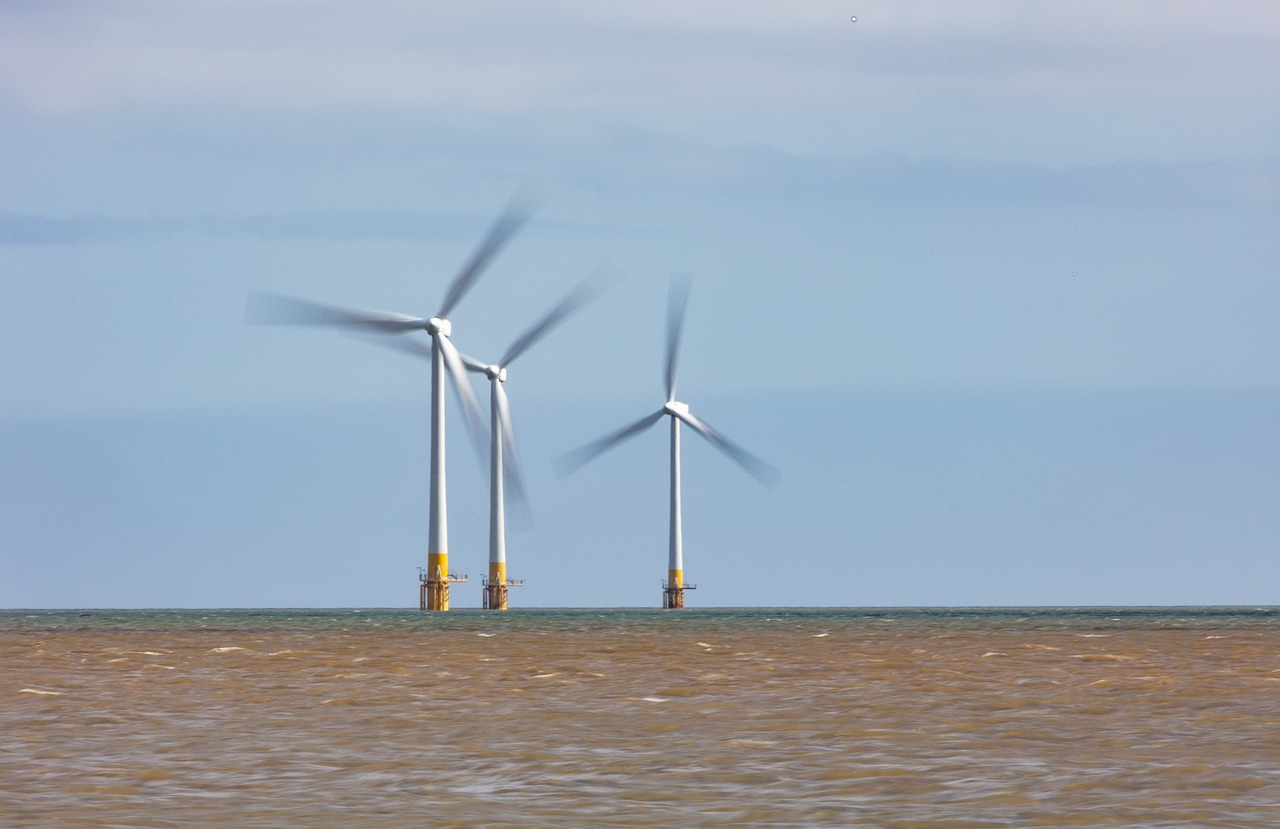
Economic Implications
When we talk about the of wind energy, it's like opening a treasure chest filled with opportunities. Investing in wind energy doesn't just contribute to a cleaner planet; it also acts as a catalyst for economic growth in various sectors. Imagine a world where clean energy not only powers our homes but also fuels job creation and local investments. That's the reality wind energy is creating!
First off, let's discuss job creation. The wind energy sector has been a robust source of employment over the last decade. According to the U.S. Department of Energy, the wind industry employed over 100,000 workers in 2019, and that number has only grown. Jobs in this field range from manufacturing and installation to maintenance and operation of wind turbines. Each wind farm can create hundreds of jobs, and these are often local positions that benefit the community. The ripple effect can be significant; when people have jobs, they spend more, thereby stimulating local economies.
Moreover, wind energy projects can lead to substantial local investments. When a wind farm is established, it often requires a significant amount of capital. This investment doesn't just disappear into thin air; it circulates within the local economy. Local businesses, from construction companies to suppliers of materials, benefit from these projects. Furthermore, many wind farms offer community benefits such as funding for local schools, infrastructure improvements, and even tax revenues that can be used to support public services.
Now, let’s talk about the long-term financial benefits. Once a wind energy project is up and running, the operational costs are relatively low compared to fossil fuel plants. Wind energy has no fuel costs, and the maintenance costs are predictable. This stability can lead to lower energy prices for consumers and businesses alike, which is a win-win situation. Additionally, as technology continues to advance, the cost of wind energy is expected to decline even further, making it one of the most affordable energy sources available.
To put it into perspective, let’s look at a quick comparison of costs:
| Energy Source | Average Cost per Megawatt-hour (MWh) |
|---|---|
| Wind Energy | $30 - $60 |
| Natural Gas | $40 - $70 |
| Coal | $60 - $120 |
This table shows that wind energy is not just environmentally friendly but also economically viable. As we move towards a more sustainable future, the of wind energy will continue to unfold, paving the way for a greener and more prosperous world.
In conclusion, embracing wind energy is not just about saving the planet; it’s also about unlocking a wealth of economic opportunities. From job creation to local investments and long-term savings, the benefits are clear. As we continue to innovate and invest in this renewable energy source, we can expect to see even greater economic growth and stability in the years to come.
- What are the main economic benefits of wind energy? Wind energy creates jobs, stimulates local investments, and offers long-term savings on energy costs.
- How many jobs does the wind energy sector create? The wind energy sector employed over 100,000 workers in the U.S. as of 2019, with numbers continuing to grow.
- Is wind energy cost-effective? Yes, wind energy is one of the most affordable energy sources available, with costs expected to decline further as technology advances.
- How do wind farms benefit local communities? Wind farms contribute to local economies through job creation, funding for schools, and tax revenues that support public services.
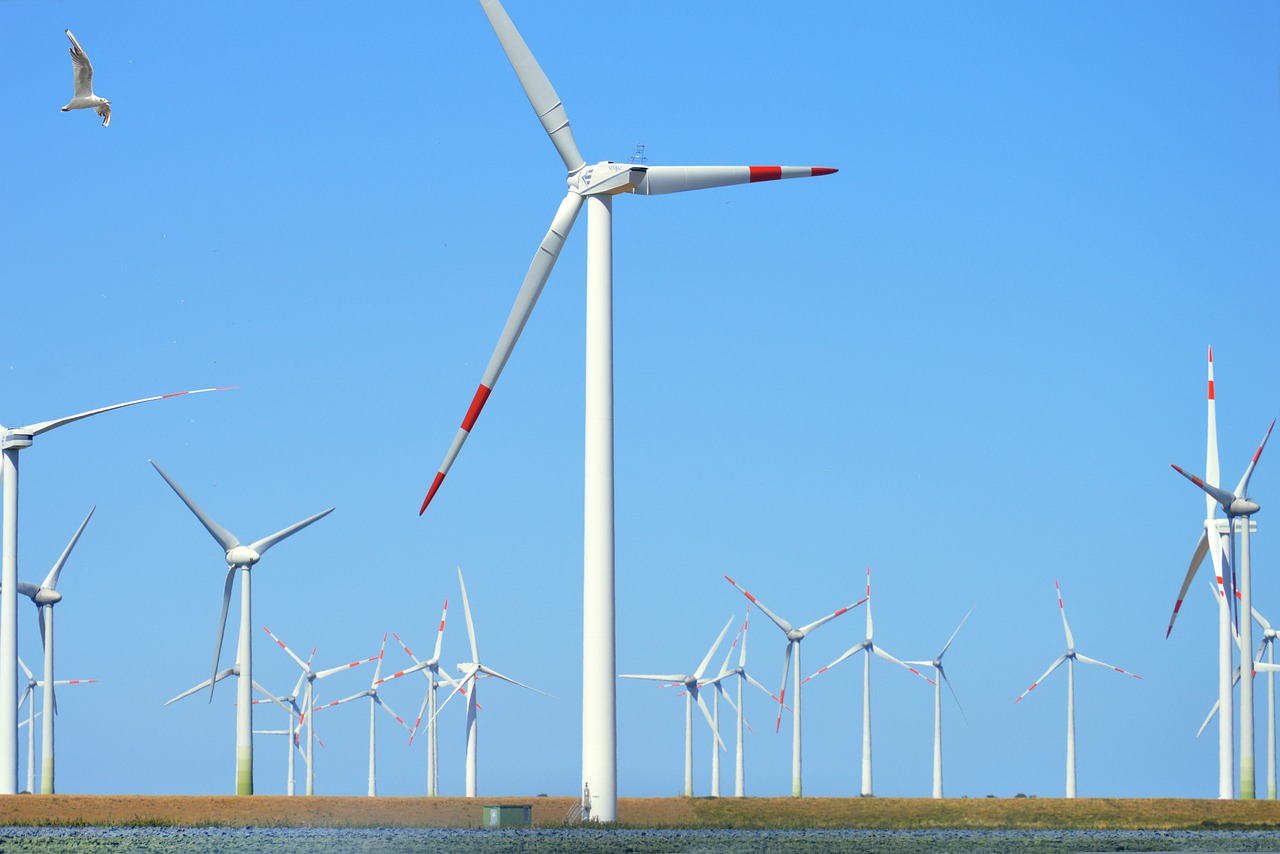
Challenges Facing Wind Energy
Despite the numerous benefits that wind energy brings to the table, it is not without its challenges. As we strive to harness the power of the wind, several obstacles must be addressed to facilitate its widespread adoption. One of the most significant challenges is intermittency. Wind energy generation is inherently dependent on wind availability, which can be unpredictable. This means that while one area may be experiencing strong winds, another could be calm, leading to fluctuations in energy supply. To combat this issue, technological advancements such as improved forecasting models and energy storage solutions are being developed. These innovations aim to create a more stable and reliable energy supply, ensuring that we can harness wind energy effectively.
Another critical challenge lies in infrastructure development. The growth of wind energy requires substantial investment in infrastructure to support the generation and distribution of electricity. This includes the construction of wind farms, the installation of transmission lines, and the development of grid systems that can integrate wind energy into the existing power supply. The complexity of these projects often leads to delays and increased costs. Moreover, the need for maintenance and upgrades of existing infrastructure poses additional hurdles that must be overcome.
Public acceptance is also a significant factor in the expansion of wind energy. While many people recognize the environmental benefits of wind power, there can be local opposition to the construction of wind farms. Concerns about noise, visual impact, and potential effects on property values often lead to resistance from communities. To address these issues, it is essential to engage with local residents and stakeholders early in the planning process. Open communication and education about the benefits of wind energy can help alleviate fears and foster support for new projects.
Furthermore, as we look at the broader picture, we must consider the economic implications of transitioning to wind energy. While investments in wind energy can stimulate job creation and local economies, the initial costs can be daunting. Policymakers and investors must find a balance between immediate financial outlay and long-term benefits. The development of incentives and subsidies can play a crucial role in encouraging investment in wind energy projects.
In summary, while wind energy presents a promising solution to our energy needs, it faces significant challenges that require innovative thinking and collaborative efforts to overcome. By addressing issues such as intermittency, infrastructure development, public acceptance, and economic factors, we can pave the way for a more sustainable and clean energy future.
- What is the main challenge of wind energy? The main challenge is intermittency, which refers to the unpredictable nature of wind availability.
- How does infrastructure affect wind energy adoption? Significant infrastructure investment is required for the generation and distribution of wind energy, which can lead to delays and increased costs.
- Why do some communities oppose wind farms? Local opposition can arise due to concerns about noise, visual impact, and potential effects on property values.
- What role do economic factors play in wind energy? While transitioning to wind energy can stimulate job creation and local economies, the initial costs can be a barrier to investment.
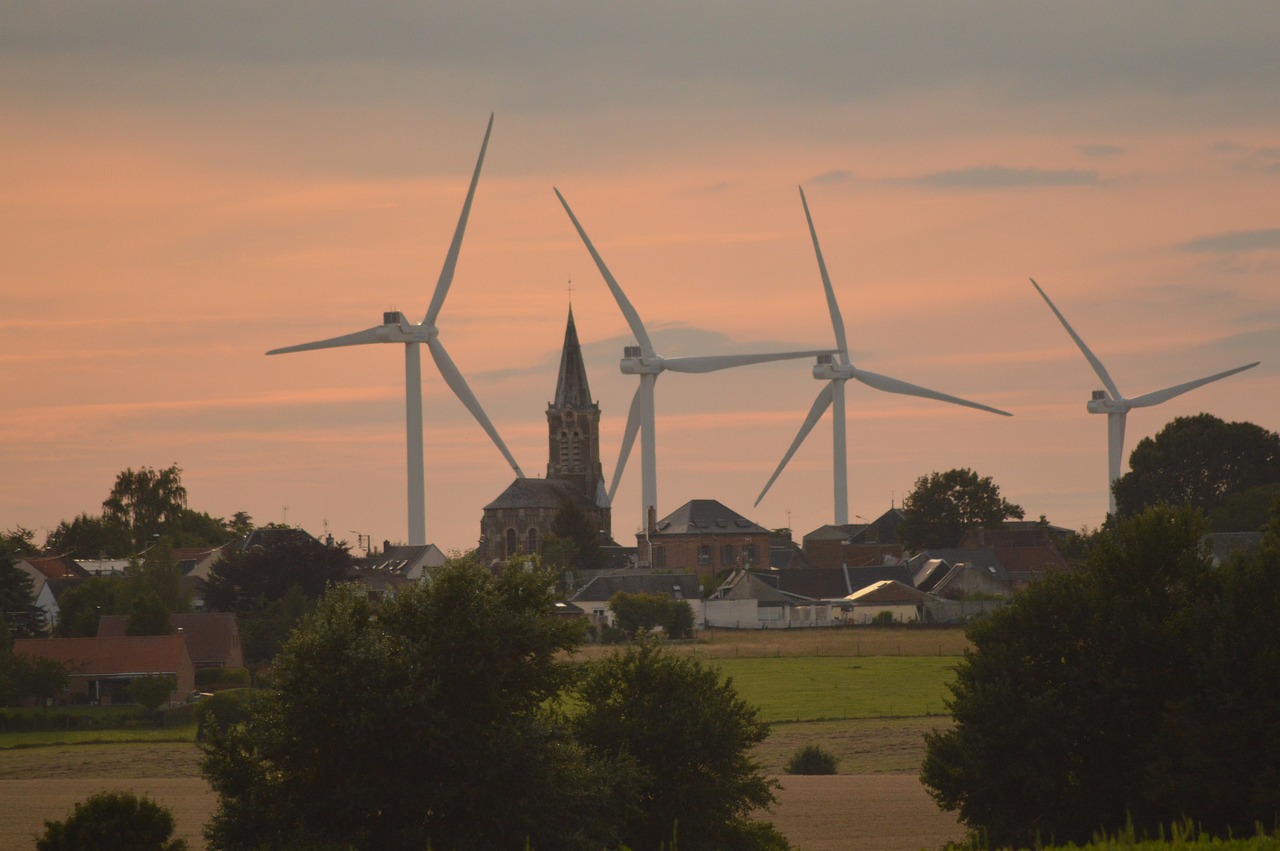
Intermittency Issues
Wind energy, while an incredible source of renewable power, comes with its own set of challenges—most notably, intermittency. This term refers to the inconsistency of wind as a resource; the wind doesn't blow all the time, and this can lead to fluctuations in energy production. Imagine trying to fill a bathtub with water from a hose that only flows intermittently. You'd struggle to maintain a consistent level, and the same goes for wind energy. It’s essential to address this issue to ensure that wind power can contribute reliably to our energy grid.
One of the primary concerns with intermittency is that it can lead to energy shortages during periods of low wind. For instance, during a calm day, wind turbines may produce little to no electricity, which could strain the overall energy supply. This inconsistency can make it challenging for grid operators to balance supply and demand, leading to potential blackouts or the need to rely on backup fossil fuel plants. To tackle this issue, several strategies and technologies are being developed.
Technological advancements are paving the way for improved energy management. Some of these include:
- Energy Storage Systems: Technologies such as batteries and pumped hydro storage allow excess energy generated during windy periods to be stored and used during calm periods.
- Smart Grids: These modern electrical grids can better manage the flow of energy, integrating various sources and adjusting to real-time demand.
- Diverse Energy Mix: Combining wind energy with other renewable sources, such as solar and hydropower, can help mitigate the effects of intermittency. When one source is low, another may be generating energy, creating a more stable supply.
Additionally, forecasting wind patterns has become increasingly sophisticated. By utilizing advanced meteorological models, energy companies can predict when and where the wind will blow, allowing for better planning and management of energy resources. This predictive capability helps to smooth out the peaks and valleys of energy production, making wind a more reliable source of power.
In summary, while the intermittency of wind energy poses challenges, ongoing innovations and strategic planning are helping to create solutions that enhance the reliability of this vital resource. As we continue to invest in technology and infrastructure, the potential for wind energy to play a significant role in our energy future becomes even more promising.
Q: What is wind energy intermittency?
A: Wind energy intermittency refers to the variability in wind speed and direction, which can lead to fluctuations in electricity generation from wind turbines.
Q: How can we manage the intermittency of wind energy?
A: Solutions include energy storage systems, smart grids, and diversifying the energy mix by integrating other renewable sources.
Q: Is wind energy a reliable source of power?
A: While wind energy can be intermittent, advancements in technology and forecasting are making it increasingly reliable as part of a broader energy strategy.
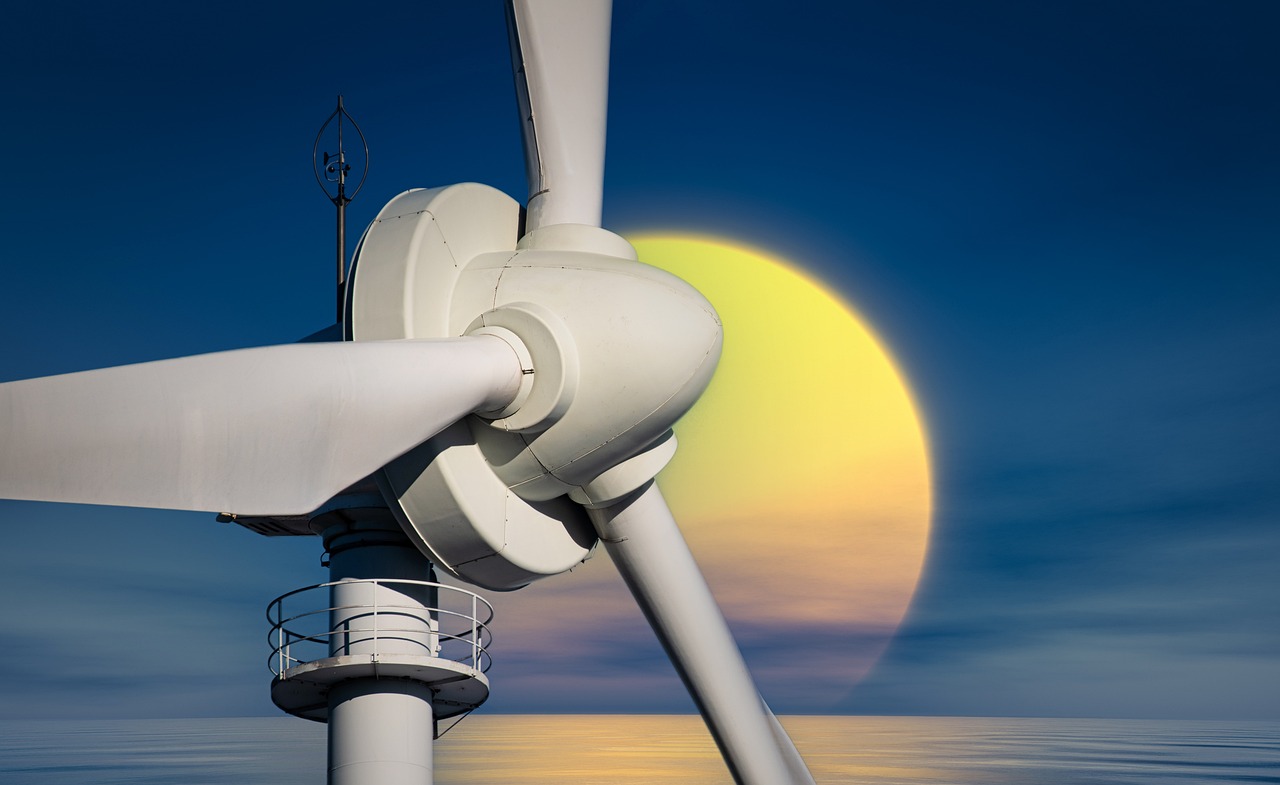
Infrastructure Development
As we dive deeper into the world of wind energy, one of the most pressing challenges we face is the development of the necessary infrastructure. You might be wondering, why is infrastructure so crucial? Well, think of it like building the roads and bridges that connect cities; without them, transportation would be a nightmare. Similarly, for wind energy to thrive, we need a robust framework that can support its growth. This encompasses everything from the construction of wind farms to the integration of these energy sources into our existing power grids.
To put it simply, for wind energy involves several key components:
- Grid Integration: This is where the magic happens. Wind energy must be efficiently fed into the electrical grid, which requires upgrades and expansions to existing systems. We need to ensure that the grid can handle the fluctuating nature of wind energy, which can be quite a task!
- Transportation: Getting the massive components of wind turbines to their installation sites is no small feat. Roads may need to be widened, and transportation routes carefully planned to accommodate the size and weight of the turbine blades and towers.
- Maintenance Facilities: Once the turbines are up and running, they require regular maintenance to ensure optimal performance. This necessitates the establishment of local service centers and trained personnel who can respond swiftly to any issues.
Now, let's not forget about the financial aspect of infrastructure development. The initial investment can be hefty, but the long-term benefits often outweigh the costs. According to recent studies, every dollar spent on wind energy infrastructure can lead to significant returns through job creation and local economic stimulation. Plus, with the increasing push for renewable energy solutions, governments and private investors are more willing than ever to fund these projects.
Moreover, the integration of smart technology into wind energy infrastructure is revolutionizing the way we harness wind power. Smart grids, for instance, can adjust the flow of electricity based on real-time demand and supply, making it easier to manage the inherent variability of wind energy. Imagine a system that not only generates clean energy but also optimizes its delivery based on our consumption patterns. Sounds futuristic, right? But it's happening now!
In conclusion, while the road to robust wind energy infrastructure is fraught with challenges, the potential rewards are immense. By investing in the right technologies and strategies, we can pave the way for a sustainable energy future that benefits both our planet and our economies. The journey may be long, but every step we take brings us closer to a cleaner, greener world.
Q: What is the biggest challenge in developing wind energy infrastructure?
A: The biggest challenge often lies in grid integration, where existing power grids must be upgraded to handle the unique characteristics of wind energy.
Q: How does transportation impact wind energy development?
A: Transportation is crucial as the large components of wind turbines, such as blades and towers, require specialized routes and sometimes road modifications to reach their installation sites.
Q: Are there economic benefits to investing in wind energy infrastructure?
A: Yes! Investing in wind energy infrastructure can lead to job creation, local economic stimulation, and long-term financial benefits as the reliance on fossil fuels decreases.
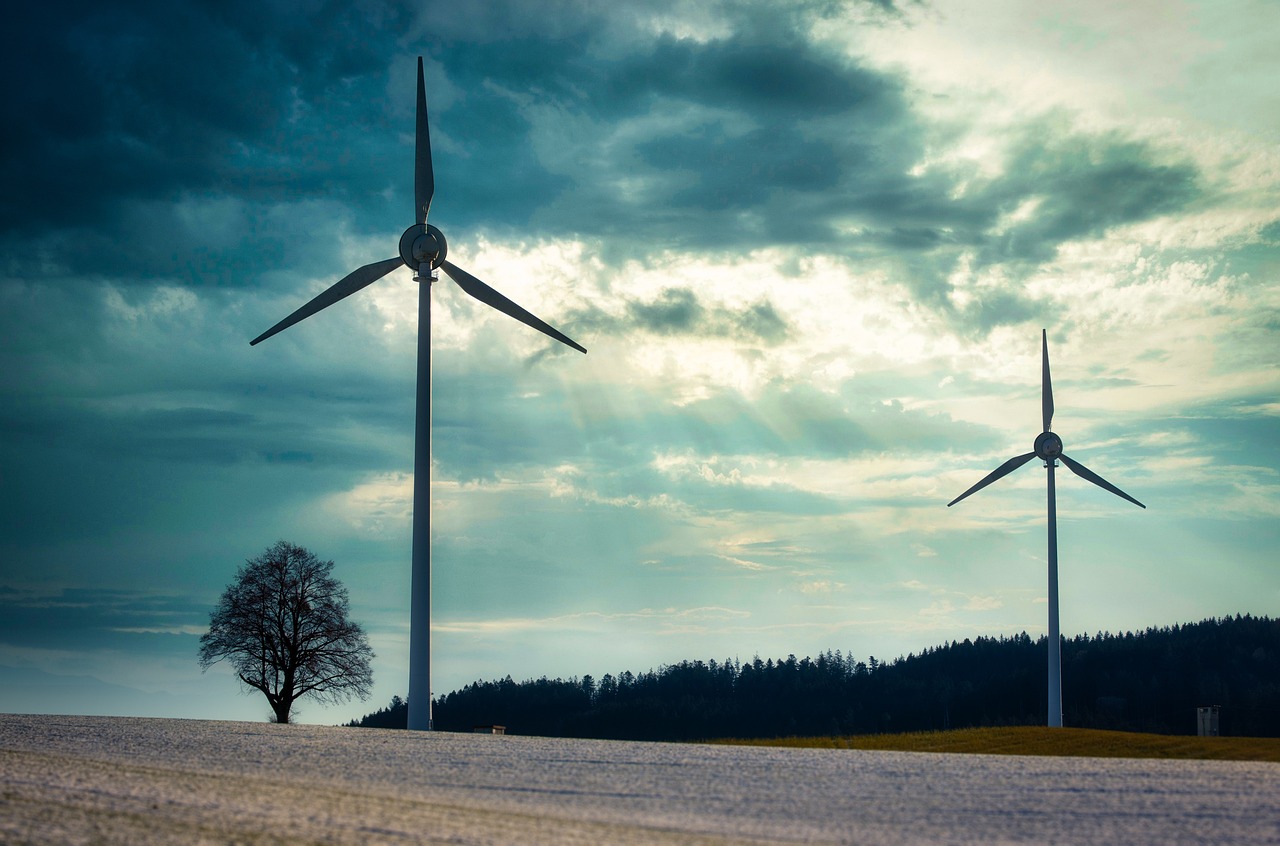
Future of Wind Energy
The future of wind energy is not just bright; it's positively radiant! As we stand at the crossroads of innovation and sustainability, wind energy is poised to become a cornerstone of our global energy strategy. With advancements in technology and an increasing commitment to combat climate change, we are witnessing a remarkable transformation in how we harness wind power. But what does this future look like? Let’s dive into the exciting developments on the horizon.
One of the most significant trends shaping the future of wind energy is the rise of offshore wind farms. These installations are being developed in deeper waters, where winds are stronger and more consistent. Offshore wind energy has the potential to generate vast amounts of electricity, significantly contributing to our energy needs. For instance, according to recent studies, a single offshore wind turbine can produce enough energy to power thousands of homes! This shift from onshore to offshore not only enhances energy output but also minimizes land use conflicts, which is a critical concern in many regions.
Moreover, technological innovations are driving efficiency and reducing costs. The advent of larger, more efficient turbines means that we can generate more power with less infrastructure. These modern turbines are equipped with smart technology that optimizes their performance based on real-time wind conditions. For example, some turbines can adjust their blade angles to capture wind more effectively, maximizing energy production. This not only makes wind energy more competitive with traditional fossil fuels but also enhances its appeal as a reliable energy source.
Another crucial aspect of the future of wind energy is its integration with energy storage solutions. As we know, wind energy generation can be intermittent, depending on wind patterns. However, with the development of advanced battery technologies and other storage systems, we can store excess energy generated during windy periods and release it during calm times. This capability will ensure a more stable and reliable energy supply, making wind energy a formidable player in the energy market.
Policy support is also a vital component of the wind energy landscape moving forward. Governments worldwide are recognizing the importance of renewable energy and are implementing policies to promote investment in wind power. This includes tax incentives, subsidies, and renewable energy targets that encourage both public and private sectors to invest in wind energy projects. As nations strive to meet their climate goals, the role of wind energy in reducing greenhouse gas emissions will be more critical than ever.
To summarize the future of wind energy, we can highlight several key points:
- Offshore Wind Farms: Expanding into deeper waters for higher energy output.
- Technological Innovations: More efficient turbines and smart technologies enhancing performance.
- Energy Storage Solutions: Addressing intermittency and ensuring a stable supply.
- Policy Support: Government initiatives driving investment and growth in wind energy.
In conclusion, the future of wind energy is not only promising but also essential for a sustainable energy landscape. As we continue to innovate and adapt, wind energy will play a pivotal role in our transition to a cleaner, greener planet. The winds of change are blowing, and they carry with them the power to transform our energy systems for generations to come.
1. What are the main advantages of wind energy?
Wind energy is renewable, reduces greenhouse gas emissions, and can lead to energy independence. It also creates jobs and stimulates local economies.
2. How does wind energy impact wildlife?
While wind energy is cleaner than fossil fuels, it can affect local wildlife, particularly birds and bats. However, ongoing research and technology improvements aim to mitigate these impacts.
3. What is the future of wind energy technology?
The future includes larger, more efficient turbines, offshore wind farms, and better energy storage solutions, making wind energy more reliable and cost-effective.
4. How can I support wind energy initiatives?
You can support wind energy by advocating for renewable energy policies, investing in green energy programs, and educating others about its benefits.
Frequently Asked Questions
- What is wind energy and how does it work?
Wind energy is the process of converting wind's kinetic energy into electricity using wind turbines. When the wind blows, it spins the blades of the turbine, which then turns a generator to produce electricity. It's like harnessing the natural power of the breeze to light up our homes!
- What are the main benefits of wind energy?
Wind energy offers numerous benefits, including reduced greenhouse gas emissions, energy independence, and job creation. It’s a clean source of power that helps combat climate change while providing economic opportunities in local communities. Think of it as a win-win for both the planet and the economy!
- Are there any environmental impacts associated with wind energy?
Yes, while wind energy is much cleaner than fossil fuels, it can impact local wildlife, particularly birds and bats. However, ongoing research and better turbine designs are helping to minimize these effects. It's essential to balance clean energy production with wildlife conservation.
- How does wind energy affect land use?
Wind farms require significant land, which can lead to land use conflicts. However, many wind farms are located in areas that are not suitable for agriculture or development, thus minimizing the impact. It’s about finding the right spots where we can generate clean energy without compromising land value.
- What challenges does wind energy face?
Wind energy faces several challenges, such as intermittency (the wind doesn't always blow), the need for improved infrastructure, and public acceptance. However, technological advancements are being made to address these issues, ensuring that wind energy can be a reliable source of power.
- What advancements are being made to improve wind energy reliability?
To tackle intermittency, advancements in energy storage technologies and smart grid solutions are being developed. These innovations help store excess energy generated during windy periods for use when the wind isn't blowing, making wind energy a more stable option.
- What is the future of wind energy?
The future of wind energy looks bright! With ongoing innovations, increasing global investments, and supportive policies, wind energy is set to play a crucial role in achieving global climate goals. It's exciting to see how this clean energy source will evolve and expand in the coming years!



















